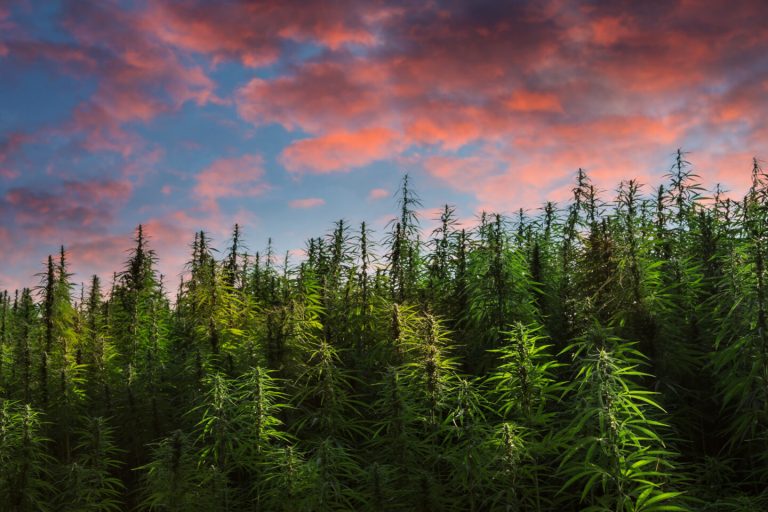When you hear the phrase “cannabis tourism,” what comes to mind? A party bus with smoke billowing out of open windows? Scaling the side of a grassy hill to get a glimpse of the cannabis promised land? Perhaps hitting a joint and then gently descending into a child’s pose? All of these are correct. Cannabis-related tourism has evolved quite a bit since the early days of legalization.
When Colorado voters passed adult use in 2012, people from all over the country flocked to the Centennial State to experience something they never had before—consuming cannabis legally. Early cannabis tourism experiences experimented with ideas, which commonly consisted of taking patrons to dispensaries where they could shop and then providing a safe space for them to consume their purchases, which was usually inside a tour bus or an outside venue.
This brand of tourism exists in other markets as well, such as the craft beer market. People sign up for pub crawls where attendees can sample and purchase unique brews. Craft beer tourism also includes dinners with menus to highlight the flavors of the hops, tours of breweries where the beer is being made, as well as art gallery and music events where local, craft beers are showcased. There are even athletic events like Beer Mile, which incorporates both running and beer consumption in competition. So, what does that mean for the future of cannabis tourism?

Experiencing the Culture
Certain regions in California are known for their wine culture. Napa, Sonoma, and Santa Barbara counties draw millions of people annually who enjoy leisurely strolls through the vineyards, artisan cheeses, and world-renowned wine. It’s a whole lifestyle. Similarly, Kentucky draws bourbon aficionados seeking the finest aged liquor.
While still in its infancy, the cannabis sector of tourism has immense potential. The famed Emerald Triangle of northern California, including Mendocino, Humboldt, and Trinity counties, has a storied and rich history of cannabis cultivation and culture going back decades. Much of the production and cultivation of high-quality cannabis, as seen with today’s most popular strains, took place in those hills. While the stringent framework of cannabis legalization and the opinion of some who believe that cannabis grown outdoors is inferior (as if!) has taken its toll on the economic viability of production in this region, the history and stories are unmatched.
Furthermore, the craft, legacy genetics, and regenerative cultivation techniques applied by farmers in the Emerald Triangle produce cannabinoid and terpene profiles that are complex, therapeutic, and unique to the region. (Here’s a tip: the next time you visit your local California dispensary, ask for something grown outdoors in the Emerald Triangle. You’re welcome.)
Farm tours, farmers’ markets, and cannabis farm-to-table style dinners are just some of the offerings that could be featured in cannabis tourism. However, regulatory barriers like not allowing farmers to sell directly to the consumer or making it difficult to establish a tasting room in the small towns that dot Highway 101 have limited the realization of culture-driven cannabis tourism.
Wellness Focused
Cannabis yoga was one of the first wellness activities to overtly pair wellness with consumption. Truthfully, many of us have been getting high before experiencing yoga, massages, meditation, and painting for as long as we can remember. However, the concept of marketing these activities with cannabis only surfaced after legalization. While the places where people can publicly smoke cannabis are limited, even in legal states, opportunities to openly consume at private facilities like yoga studios or outdoor venues make them a popular choice among the wellness crowd. As the normalization of cannabis use continues, these offerings may be less in the camp of cannabis tourism and more under the umbrella of wellness in general.

Culinary Delight
Pairing and integrating cannabis with food is a perfect match, even when many of us, while in the throes of the munchies, have made some suspect food pairing decisions. I recall one particular night when I was convinced that the peanut butter and easy cheese sandwich I had made was a culinary marvel. Still the fact remains that cannabis has the potential to enhance not only our appetites but also the experience of eating.
Furthermore, like pairing food with wine, the flavors and aromas in cannabis can complement food as well, elevating both the cannabis, the meal, and you! There are two main types of cannabis dinners. The first pairs food with specific strains of cannabis to compliment the flavors and aromas of both and to guide the consumer through the meal in the context of the effects of cannabis. The second infuses meals with THC or other cannabinoids, which puts the focus on a high that evolves throughout the experience. This type of cannabis tourism is very popular among consumers. In the 2023 Consumer Survey from New Frontier Data, 73% of respondents said they would like to attend an infused dinner.
The Future of Cannabis Tourism
Cannabis tourism once focused squarely on giving people who live in illegal states the chance to buy and consume cannabis without fear. As more states have continued to change their laws and more people have access to legal products, not only in their state but also in the neighboring ones, the offerings have shifted to include cannabis as a component of another activity, including cannabis in the context of dining as well as opportunities to experience and learn about legacy cannabis culture. There are many more emerging opportunities in the cannabis tourism space. To learn more about what’s trending, check out the Cannabis Travel Association International at cannabistravelassociation.org.
This article was originally published in the March 2024 issue of High Times Magazine.
